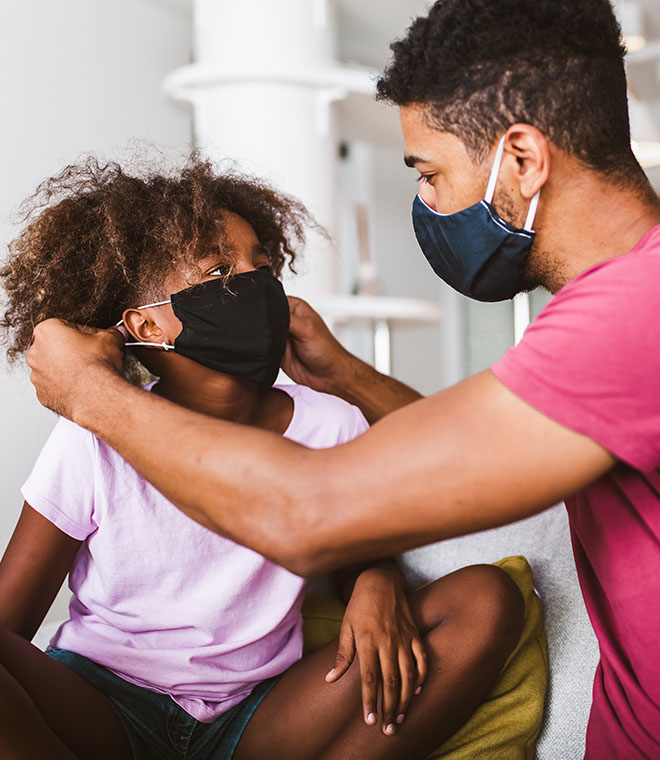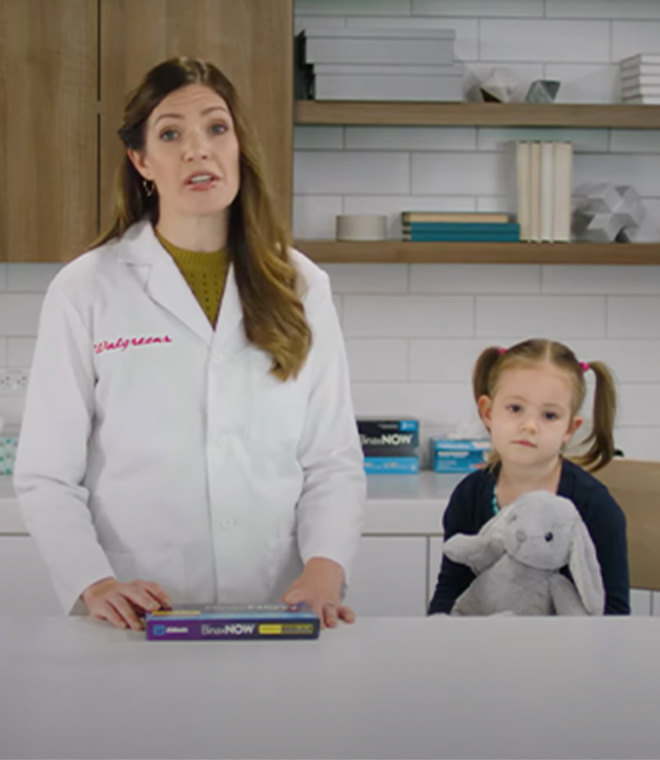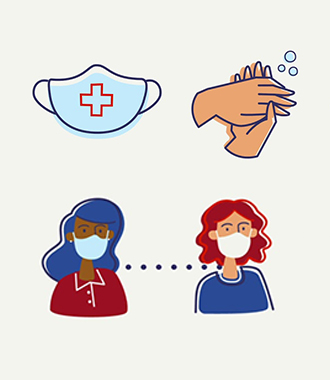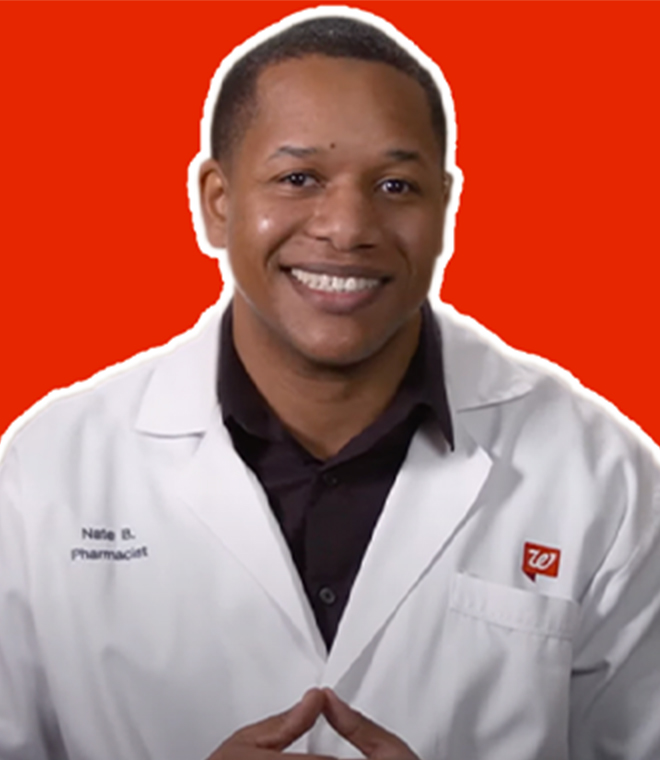Health
How face masks help stop the spread of COVID-19
By Jenilee Matz, MPH Feb 01, 2022 • 7 min
Protective masks and respirators are critical in the fight against COVID-19.
To protect yourself and others, the Centers for Disease Control and Prevention (CDC) recommends that you consistently wear the most protective mask you can. The mask you wear should also fit well.
The U.S. continues to experience new cases of COVID-19. Wearing masks or respirators such as an N95 can help slow or prevent the spread of COVID-19, especially when combined with other preventive measures like getting vaccinated, frequent hand-washing and physical distancing. Here is information on how face masks and respirators can help you protect yourself, your family and your community from COVID-19.
How do face masks and respirators work?
Protective face masks and respirators, when worn correctly and properly fitted, can help contain infectious droplets from people infected with COVID-19. A well-fitted mask or respirator also works by helping to protect the wearer from inhaling infectious droplets released by others. In addition, respirators are made to protect you by filtering out particles within the air, including the virus that causes COVID-19.
How are face masks and respirators effective in protecting against COVID-19?
COVID-19 is mainly known to be transmitted between people through respiratory droplets when an infected person coughs, sneezes or talks. A face mask or respirator worn over the nose and mouth can help keep these droplets from spreading to people who are nearby. Wearing a well-fitted face mask or respirator can help keep you from spreading the virus to others. It can also help protect you from others who could be infected.
What type of face mask or respirator should I wear to protect myself and other people from COVID-19?
Some masks and respirators offer a higher level of protection than others. When worn correctly, fitted respirators such as N95 provide the most protection. Surgical masks don’t provide the same level of protection as N95, but they are more effective than cloth masks.
It is most important to wear a well-fitting mask or respirator correctly. The mask should also be comfortable for you and provide good protection.
Face masks and respirators should create a physical barrier and provide a filter, if possible, while covering your nose and mouth. Protective mask options for the public include:
- NIOSH-approved respirators: Respirators (including N95 respirators) provide a much higher level of protection against viruses and other germs than other face masks, including surgical and cloth masks. However, proper fit and use of a mask or respirator affects how well they work. Respirators are commonly used by healthcare workers to control exposure to airborne germs. They fit tightly around the nose and mouth and filter out 95% of large and small particles when tested to ensure proper fit. There are also other types of respirators (N99, N100, P95, P99, P100, R95, R99, and R100), which offer the same or better protection compared to an N95 respirator.
Respirator protection is especially ideal for use in situations where there’s a higher risk of being exposed to the virus, such as situations where you’re in close contact (less than 6 feet apart) with others, caring for someone who is sick, or spending long periods of time in public spaces. Some respirators are designed and tested to meet international standards. The most widely available respirators that meet an international standard are KN95 respirators. They are not considered as effective as NIOSH-approved respirators. - Surgical or medical procedure masks: These disposable masks are usually made of two- or three-ply material with a wire nose bridge and ear loops. They offer varying levels of protection but are not as protective as NIOSH-approved respirators. Disposable face masks are intended for single use and should be discarded after each use. They should also be discarded if soiled or damaged. Always follow the instructions for use that come with your mask.
- Cloth masks: Masks made of cloth are the least effective. However, it’s better to wear any mask than no mask at all. If you choose a cloth mask, the CDC recommends that you choose one with multiple layers of tightly woven, yet breathable fabric with a nose bridge for a secure fit and better protection.
Although wearing a mask or respirator is often a voluntary protective measure, masks are required to be worn by people using any public transportation, such as planes, subways and buses. There are some businesses, workplaces and government entities that also require people to wear masks. You can check with individual locations to find out if a mask is required for entry, but it is best to carry one with you, just in case.
Face masks or respirators should not be worn by:
- Children younger than 2 years of age
- People with a disability who cannot wear a mask safely or at all, for reasons related to the disability
- People for whom wearing a mask would create a risk to workplace health, safety or job duty as determined by Occupational Safety and Health Administration (OSHA) risk assessment
Wearing a protective mask should not replace other preventive measures. Instead, masks should be combined with other measures to prevent the spread of COVID-19.
Updated by Julie McDaniel, MSN, RN, CRNI, IgCN, February 2022.
Sources:
1. https://www.cdc.gov/coronavirus/2019-ncov/prevent-getting-sick/types-of-masks.html
2. https://www.cdc.gov/coronavirus/2019-ncov/your-health/effective-masks.html
4. https://www.cdc.gov/coronavirus/2019-ncov/covid-data/covidview/index.html
5. https://www.cdc.gov/coronavirus/2019-ncov/travelers/face-masks-public-transportation.html
6. https://www.cdc.gov/coronavirus/2019-ncov/prevent-getting-sick/about-face-coverings.html
7. https://www.cdc.gov/coronavirus/2019-ncov/hcp/respirators-strategy/index.html
Additional resources about face mask effectiveness and other COVID-19 precautions:
1. https://www.ncbi.nlm.nih.gov/pmc/articles/PMC7185834/
2. https://www.ncbi.nlm.nih.gov/pmc/articles/PMC7108646/
3. https://www.cdc.gov/coronavirus/2019-ncov/your-health/quarantine-isolation.html



